I am surprised about the lack of public artists, administrators and academics that don’t know the work of David Harding in 1968-78. For eight years, he served as the “Town Artist” for the Scottish new town of Glenrothes. Harding is still practicing as an artist and has published some of his memoirs on the Glenrothes work. The memoir is here: www.davidharding.net Harding was followed by Malcolm Robertson from 1978-1990. Here is all the art: Glenrothes Art
I believe that future of social practice and some public artists is EMPLOYMENT as full or part-time for an organization or community. Instead of striving for more grant dollars, LOBBY FOR JOBS as an artist. Start the movement.
Thanks to Gar Dunlap for letting me know about Brian Miller in Cumbernauld starting in 1962 as the town artist for 28 years. Here is the story on Miller.

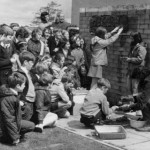
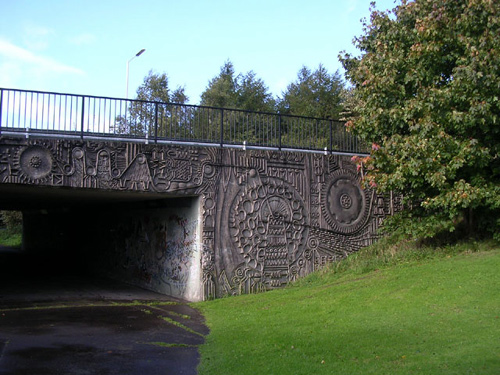
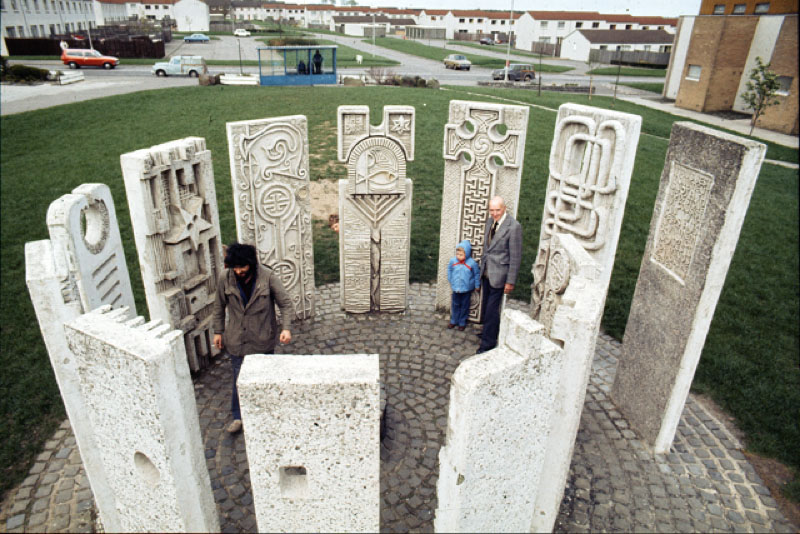
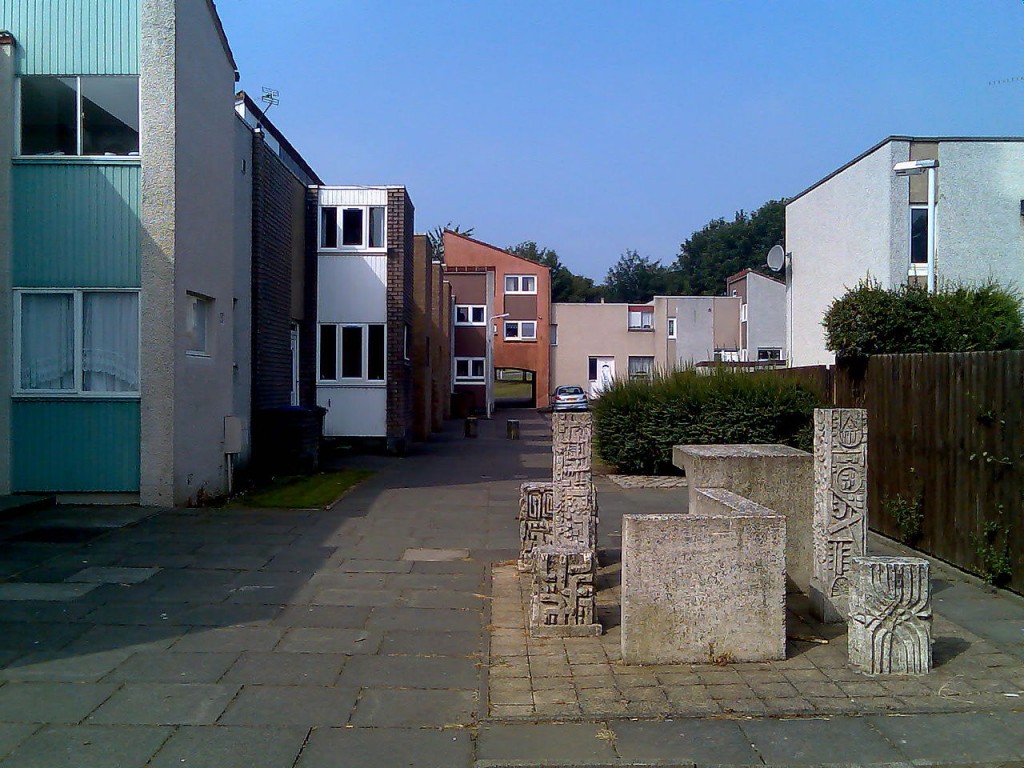



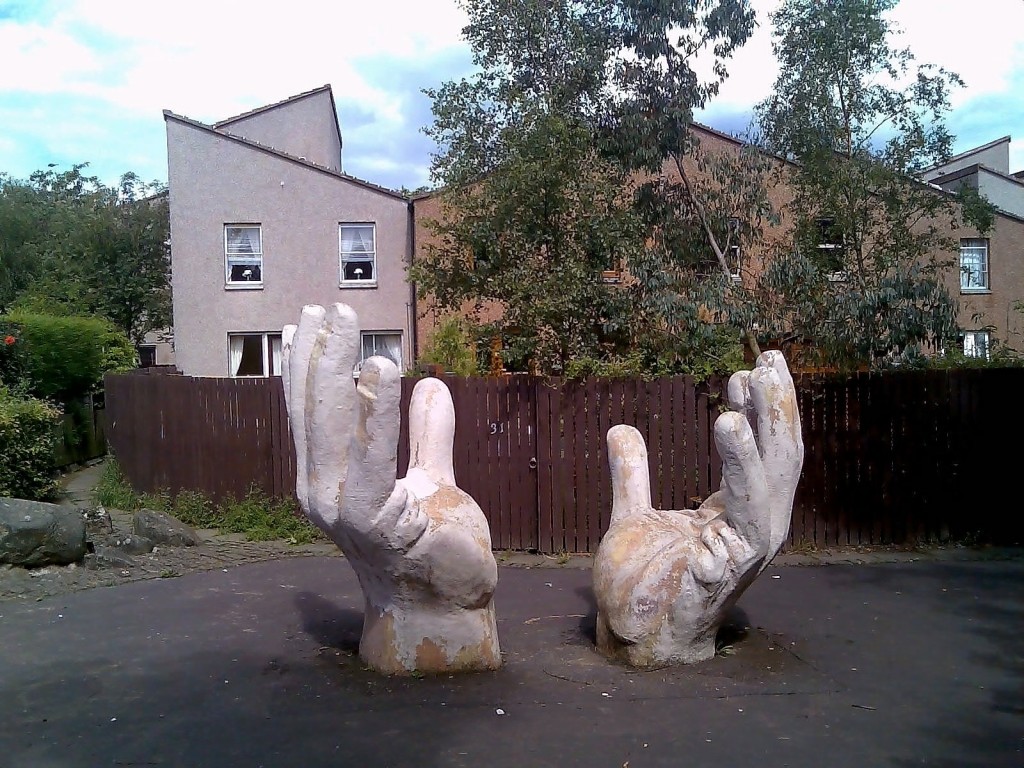

you may also be interested in his friend and colleague Brian Miller, who worked in Cumbernauld New Town at the same time
http://bookleteer.com/book.html?id=2749#page/1/mode/2up
Good to see a mention of David Harding and Malcolm Robertson. We walked through Glenrothes recently and encountered many of their works:
http://fifepsychogeography.com/2014/04/17/when-natural-cycles-turn-brutalist-windows-can-dream-of-trees/
Europe has a tradition of respect and veneration for artists. I was unaware of this until I taught at a university abroad for 2 years. In contrast, in the US, “artist” is not looked upon as a main-stream profession. Artists are relegated more to the counter-culture or hobbyist/retiree category, except for the very few elite artists who attain great media and monetary attention.
I can think of nothing better than giving a dedicated artist the freedom to create over a lifetime with a designation as a “town artist”. How wonderful for the artist and the townsfolk whose environment is enhanced by creativity, joy and beauty.
I met David in Glasgow in maybe 1985-86 and was fascinated by his work as “Town Artist.” David went to work in a city office building working alongside the Town Planner, Town Architect, and Town Engineer. David called that his studio, where he conceived, developed, and began the execution of his artworks. This working method, being side-by-side with other professionals collaboratively solving town problems and building infrastructure, proved the worth of artists as integrated professionals, regular people with a particular set of refined skills and tools that can be vital elements in building our cities and spurring civic vision. David’s work solves problems, creates community, conceives art from an inside-out perspective, rather than as art imported from the artist’s ego saturated aerie.
David’s model, so foreign to the Americana artist mythos, is what some of us tried to instigate here in the States. These working models are sometimes referred to as integrated design team artist and community-based artist. Those of us who still advocate and practice this work approach remain baffled by the artists who, when placed in this type of immersive setting, where feeding the artist’s ego is of no importance whatsoever, go home at night to their studios “to make their art.”
Jack, Perhaps I learned about Harding from you since I arrived in Seattle in 1986. Glenn
I appreciate your refreshing perspective. I have worked since 2007 as a public artist, and have the distinct pleasure of having 3 publicly-accessible artworks in my hometown. Despite that honor, it is a huge struggle to survive, as none of the hometown projects paid anything close to a living wage.
I think you are right, grants a a nice extra, but what we artists really need is regular full-time employment. That is the only way to pay the very full-time bills of living, such as rent, electric, heat, etc.
It would be lovely to be a City Artist, though in a city with at least several hundred artists, it might be difficult to choose only one. I think we need to persuade other large entities, such as Health Care Centers, HIgh Tech Enterprises, Financial Services Companies to not just buy art, but to hire artists as well.
Perhaps the most important things is to remind them to buy art from living artists, and hire them too!
There are several interesting student dissertations on Glenrothes art & architecture in the University of St Andrews School of Art History visual resources collection.